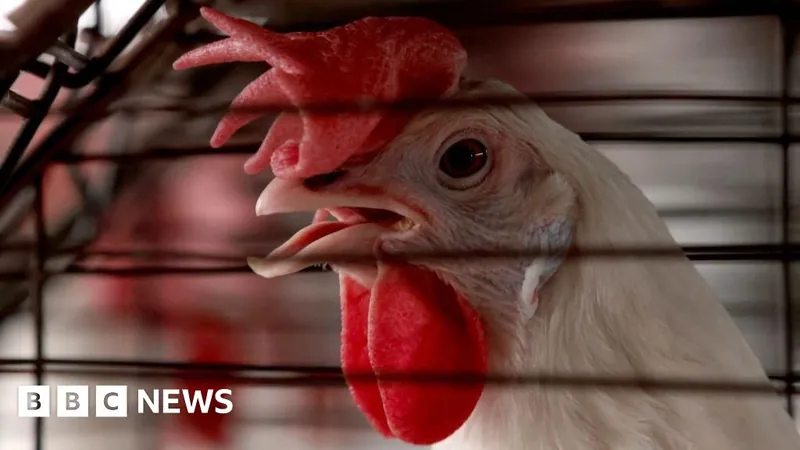
Unearthing History: Paleontologists Discover Massive Pachyrhinosaurus Skull in Alberta!
2024-09-25
Exciting Discovery in Alberta
In a thrilling find that brings the ancient past to life, paleontologists have unearthed the colossal skull of a Pachyrhinosaurus in Alberta's badlands, which roamed the region over 70 million years ago. This remarkable discovery, dubbed "Big Sam," weighs an astonishing 272 kilograms and boasts dimensions comparable to that of a baby elephant.
Uncovering a Dinosaur Herd
The excavation, conducted near Grande Prairie, revealed that this adult Pachyrhinosaurus is the second such dinosaur found in a dense bonebed, indicating that this site was once home to a herd that met its demise near a valley, situated 450 kilometers northwest of Edmonton. Notably, this incredible site is not just a single find; hundreds of juvenile bones were also uncovered, showcasing the existence of many baby dinosaurs alongside the adults.
Significance of the Discovery
Emily Bamforth, a paleontologist associated with the renowned Philip J. Currie Dinosaur Museum, emphasized the significance of the discovery, explaining that this species is endemic to the Grande Prairie area, making it unique to this region of the world.
Features of the Pachyrhinosaurus
The Pachyrhinosaurus, described as the "smaller, older cousin of the triceratops," has distinguishing features such as a large bony bump, known as a boss, replacing the traditional horn found on its cousin. The head of Big Sam, with its peculiar appearance, is marked by prominent bony bumps above the eyes, providing these dinosaurs with a unique look that makes them easily identifiable.
A 50-Year Journey
The genesis of this discovery dates back roughly 50 years when a high school teacher stumbled upon the bonebed during a walk. For a decade, it took collaborative efforts to draw attention to this site, once thought to be devoid of paleontological significance during the '70s and '80s. However, upon investigation, researchers realized they had uncovered one of North America's densest dinosaur bonebeds, containing between 100 to 300 bones per square meter.
Continuing Excavations
Since then, the excavation site has been a hotspot for paleontologists, who have intermittently unearthed additional bones belonging to turtles, long-extinct lizards, and various dinosaur species. Sixteen years ago, the first large skull of a Pachyrhinosaurus was discovered, now residing at the museum. The recent find of Big Sam occurred roughly a year ago, and both dinosaurs are believed to have been the elder members of their herd.
Challenges in Extraction
The extraction of Big Sam’s skull was no small feat. According to Bamforth, the skull was ensconced in a mass of around 300 other bones and was found in an inverted position, as if the creature had been lying on its back. To safely retrieve it, the team stabilized the skull with plaster and wooden planks before using a crane to lift it gently out of the ground. Bamforth has participated in several extractions but describes this one as the largest she has ever encountered, marking a pivotal moment in her career.
Looking to the Future
Excitement buzzes in the air as Big Sam’s skull is slated for further study at the museum. It offers a glimpse into the prehistoric worlds that once flourished in Alberta and raises questions about the varied life forms that coexisted. As researchers continue to explore this remarkable bonebed, who knows what other secrets the past may hold?
Stay Tuned!
Stay tuned for more updates on this exhilarating discovery!









 Brasil (PT)
Brasil (PT)
 Canada (EN)
Canada (EN)
 Chile (ES)
Chile (ES)
 España (ES)
España (ES)
 France (FR)
France (FR)
 Hong Kong (EN)
Hong Kong (EN)
 Italia (IT)
Italia (IT)
 日本 (JA)
日本 (JA)
 Magyarország (HU)
Magyarország (HU)
 Norge (NO)
Norge (NO)
 Polska (PL)
Polska (PL)
 Schweiz (DE)
Schweiz (DE)
 Singapore (EN)
Singapore (EN)
 Sverige (SV)
Sverige (SV)
 Suomi (FI)
Suomi (FI)
 Türkiye (TR)
Türkiye (TR)